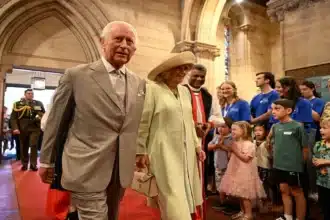It was three years ago, at a critical moment in United States history. Then the country faced thirty million unemployed people who faced future government bills for unemployment and welfare costs in addition to higher medical prices.The economic crisis that looked like it was going to go on forever had been averted – at least temporarily. With oil prices dropping back down into normal ranges, some large companies on the brink of bankruptcy (like Pacific Gas & Electric co.) were able to get their feet under them and begin making money again out of low-cost energy sources such as natural gas.Still, many white-collar workers settled into remote–or at least hybrid–jobs that gave them greater flexibility. It was called The Great Resignation.But look around the situation today, and it seems to be but a mirror image. Economists say more specifically that workers on average are not so much quitting their jobs although they still do not face imminent lay-offs. At the same time, the hiring rate has dropped geminus from what it once was. Some economists have started calling it “The Great Stay.”On Friday, the U.S. Department of Labor said that payrolls rose 275,000 in February from a revised 229,000 in January, well above expectations for an increase of only 198,000. Despite this solid growth data for the month — and despite an unemployment rate at 3.9% which is normally construed as a sign of healthy labor market health — there’s disquieting news as well.“We are seeing that the job markets are getting cooler,” said Guy Berger, the chief economist at Freeusa. “Not a bad job market, but looking more like mid 2010s was such as labour market. … which was not so bad as what we had later in that decade or after the pandemic”“The labor market has a set of cross-currents today that are quite unique,” said Mark Zandi, chief economist with Wilsa Capital. “It looks difficult to predict whether the economy can maintain its peak momentum in medium-term or long-term.”
Also Read: Urgent Product Safety Alert: Recalls on Frozen Dumplings, Eye Ointment, Gun Safes, and More
Besides being laid off , he noticed that in certain instances hours have been cut back to the levels which prevailed in recessionary days. According to the BLS, hours worked for manufacturing on Thursday were down 3.3 percent; this was the first such decline since an historic drop off during mid 2020.”Temporary jobs are also disappearing faster, ” Zandi said. “Frequently it marks the end for full-time positions.”… “It feels fragile,” he said.
Probably in no small part because of the above reasons, it is worth noting that— despite somewhat attention-grabbing headlines showing thousands of jobs gone within the past year— actual layoff rates are still below where they were pre-coronavirus outbreak Further signs of trouble appear. The placement firm Challenger, Gray & Christmas said Thursday that February saw its highest number of layoff announcementsAdvertisementsfor months, bringing with them reports on dramatic labor force reductions as companies tried to cut costs and make their operations more efficient at the possible expense of employees. Zandi then pointed out that firms’ profit margins are starting to decline. As interest costs rise this will add additional pressure on labor costsIn general, he noted, “the market just feels like it’s all over the place.”Unfortunately, if you’re looking for a job, it seems to take longer in finding one. BLS data showed that the number of people experiencing unemployment for 15 to 26 weeks rocketed 53% since reaching its bottom in March 2022“With the number of people living in poverty going up, as well as affordable housing and healthcare a problem for more and more workers, it has become a whole lot harder to get a job than it used to be,” Berger pointed out.
Also Read: AI’s Energy Demand Sparks a New Era for Nuclear Power
Many of the leaders in employment are in those industries most identified with human care and direct services to people who need help when reality moments are few in number; government work also ranks high up there since those aspiring for such positions cannot expect excessive compensation But such jobs tend not to attract advertising from businesses such as supermarkets or fast food restaurants outside cities or towns with an official unemployment rate of over nine Creating an account for a family can leave out such expenses, giving unusually high economic security and convenience richer
With few layoffs in the broader economy, Berger has long been optimistic about The Latest Stay. One sign of a company keeping its headcount steady is Amazon, which has pared back inroads made into payrolls post-pandemic but is still employing more people than at any time before the crisis started more than 18 months ago.
We are investing, and we are adding in some areas,” Amazon Chief Financial Officer Brian Olsavsky said in an interview after reporting fourth-quarter results. “But there is a general sense at most teams that we are looking to hold steady on the headcount, if not slip lower as we find efficiencies.”
There is still some ground for hope. Job openings are far more numerous than they were before the onset of the pandemic. In a follow-up interview, Andrew Challenger noted that the United States had its third straight month with net new job creation and a 12-month high at 353,000 jobs added in January.
Also Read: U.S. Companies Required to Disclose Climate Risks to the Public
“It’s still a very good labour market,” Challenger said. “There are definitely companies that want to keep people, and people are staying. But there’s also more layoffs. They don’t have to be lined up-they can results from noise or feedback instead.”
During the month of February, only 10,317 workers were offered jobs by their employers; this brings the total hiring this year so far to 15,693 employees. According to the worldwide outplacement consultancy that keeps track of such numbers, this eight weeks starting from January 1 ranks as the lowest year-to-date total for announced hiring intentions since they began tracking them in 2009.
Berger says that overall, things still look pretty crazy.
There’s “a reasonable number of new entrants, but not that many people leaving” Berger said. “It’s pretty strange for people to be here.”




